How to live on Other Planets: Saturn
Aug 30, 2017 20:49:58 GMT
apophys, samchiu2000, and 3 more like this
Post by matterbeam on Aug 30, 2017 20:49:58 GMT
Hello! I've copied over most of my latest blog post here. Happy reading!
(I'm sorry for the image sizes on this forum).
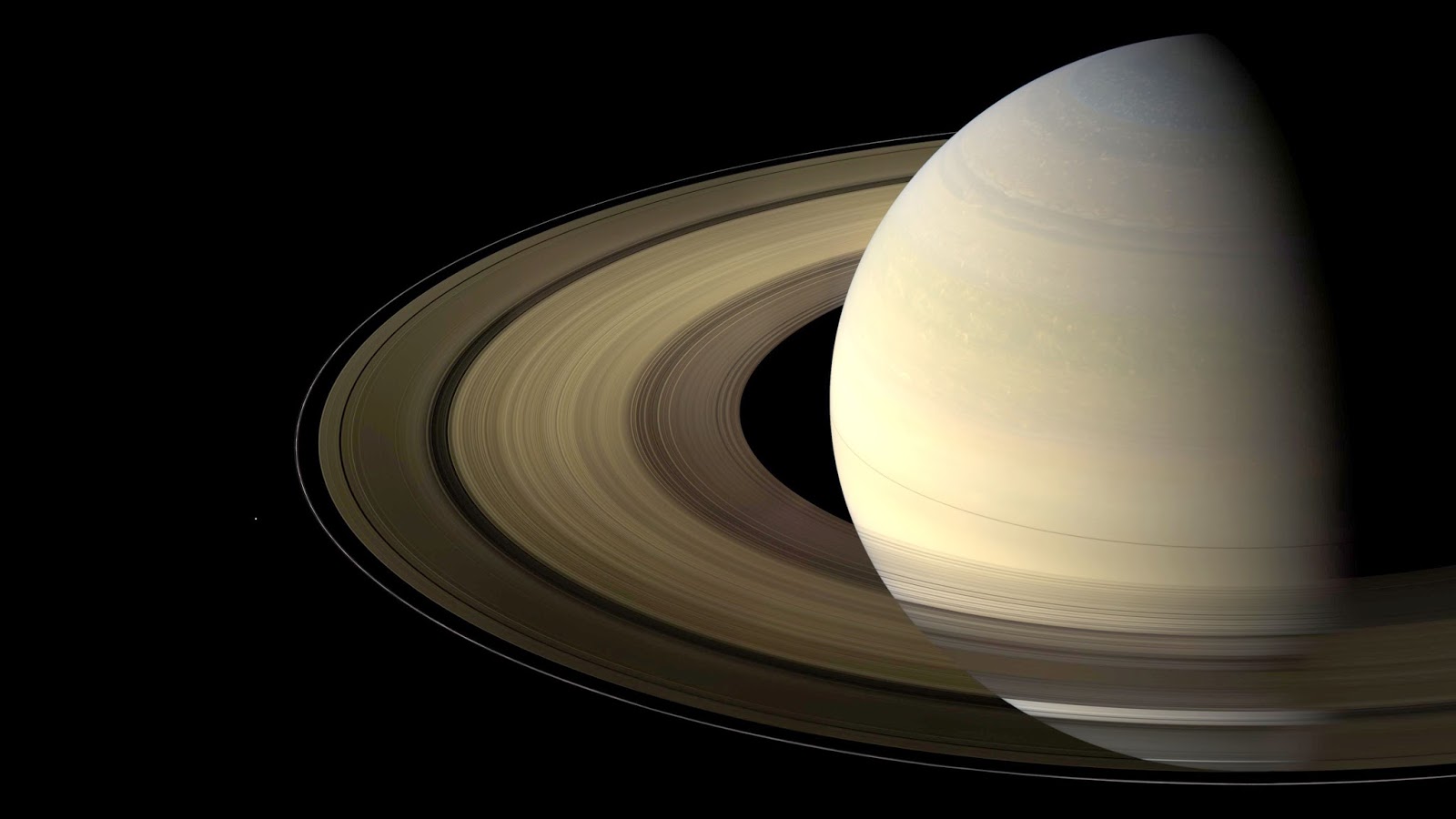 ...can we live in the Saturnian system?
...can we live in the Saturnian system?
Description
Saturn is the second-largest planet in the Solar System, just a bit wider than nine times Earth and weighing nearly a hundred times more. It is distinguished by its vivid set of rings and large moons.
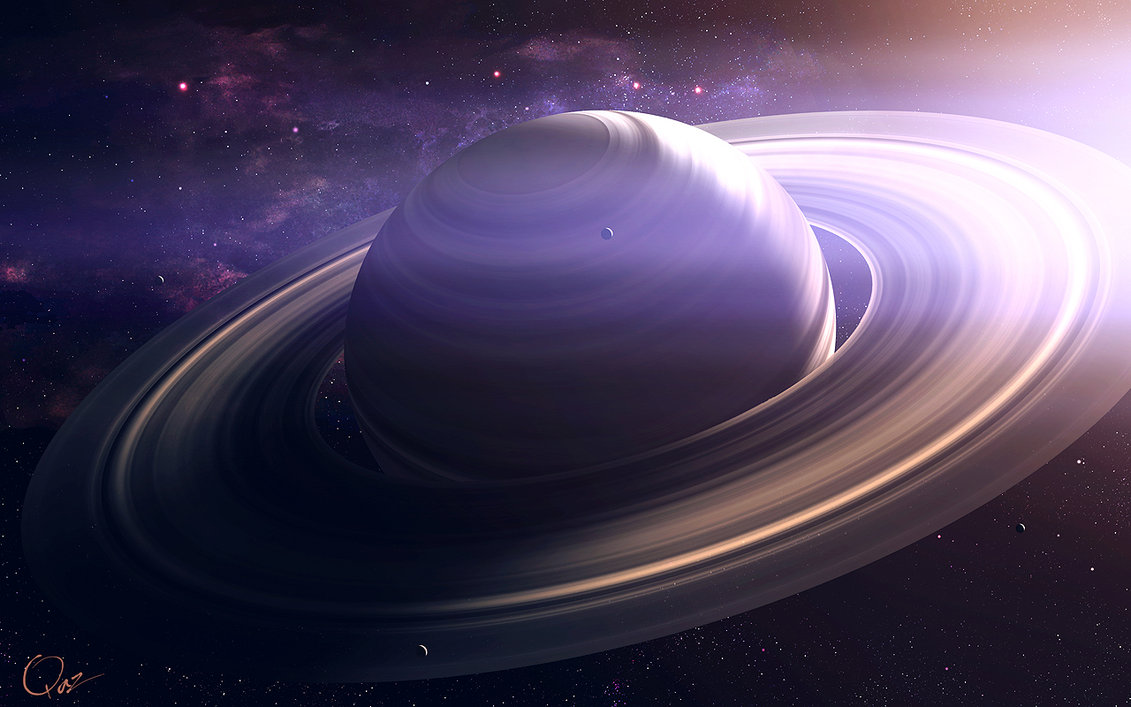 Like a typical gas giant, it is mostly hydrogen (96%) and helium (3%), with these gasses compressed into a metallic state by the pressure at the core.
Like a typical gas giant, it is mostly hydrogen (96%) and helium (3%), with these gasses compressed into a metallic state by the pressure at the core.
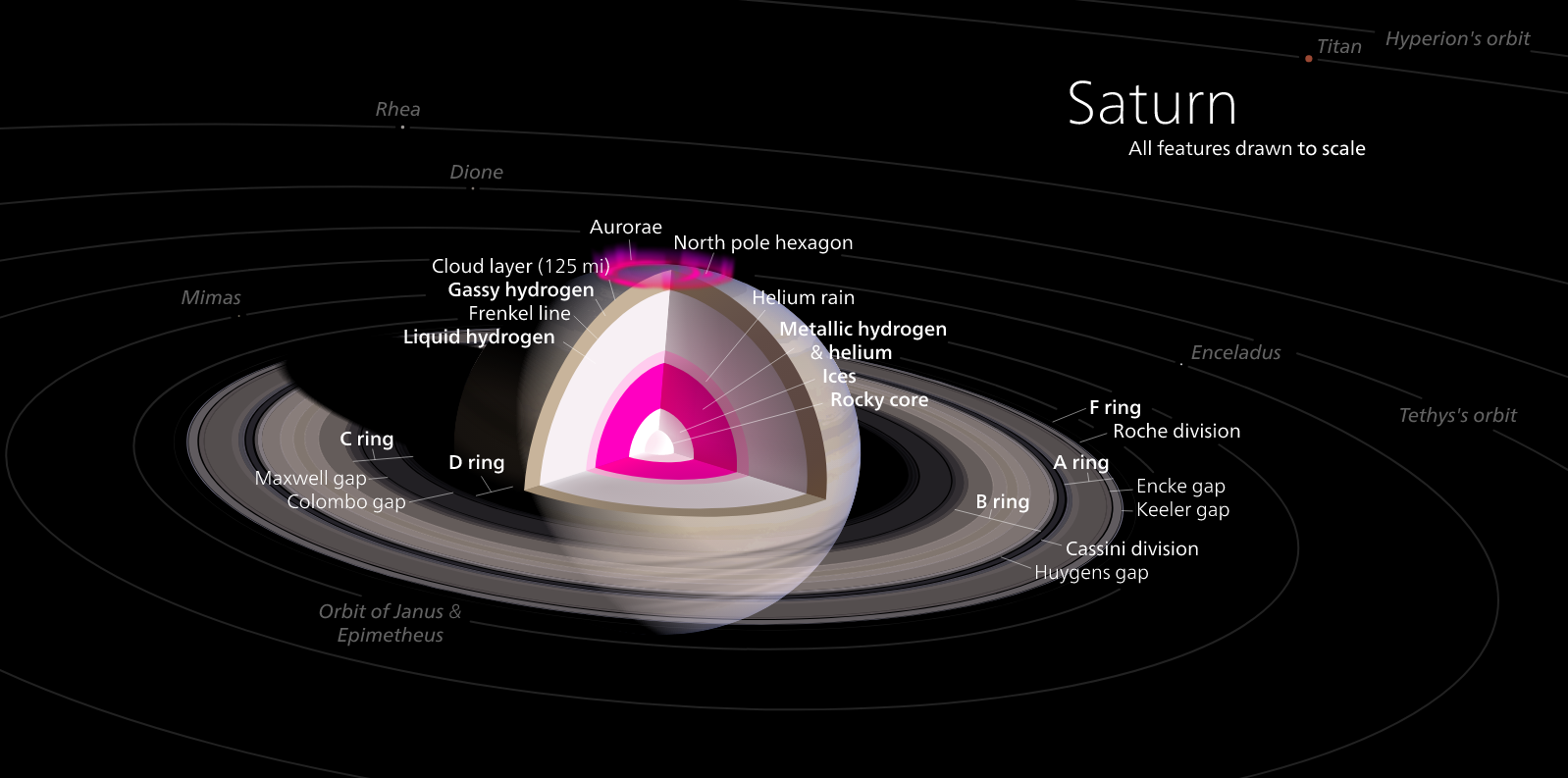 The giant's atmosphere is less well explored than that of Jupiter, as only three missions have sent probes to Saturn compared to eight for the former. Hopefully we will learn much more as the Cassini probe, which has orbited Saturn since 2004, spirals to its end in the upper atmosphere.
The giant's atmosphere is less well explored than that of Jupiter, as only three missions have sent probes to Saturn compared to eight for the former. Hopefully we will learn much more as the Cassini probe, which has orbited Saturn since 2004, spirals to its end in the upper atmosphere.
 0km is set at the altitude where atmospheric pressure is 1atm
0km is set at the altitude where atmospheric pressure is 1atm
Saturn's atmosphere is much cooler than Jupiter's. The mass difference between the gas giants begins to show as the gasses are much less compressed. At the altitude where atmospheric pressure is equal to Earth's sea level (1atm), we find a frigid haze (-173 degrees Celsius) that obscures the lower levels.
Going deeper reveals three colourful cloud layers. Ammonia, being the lightest, floats on top. Underneath it is a layer of ammonium hydrosulfide (ammonia + water + sulphur) that extends for another hundred kilometers. Beneath both are water ices, starting at 10 atm pressure. Atmospheric temperatures only become comfortable (>20 degrees Celsius) at 300km below the 1 atm altitude, where pressures approach a hundred times sea level.
As stated above, one of Saturn's most impressive features is its ring system. These are composed of 99% water ice and vary between 1m and 1km thickness.
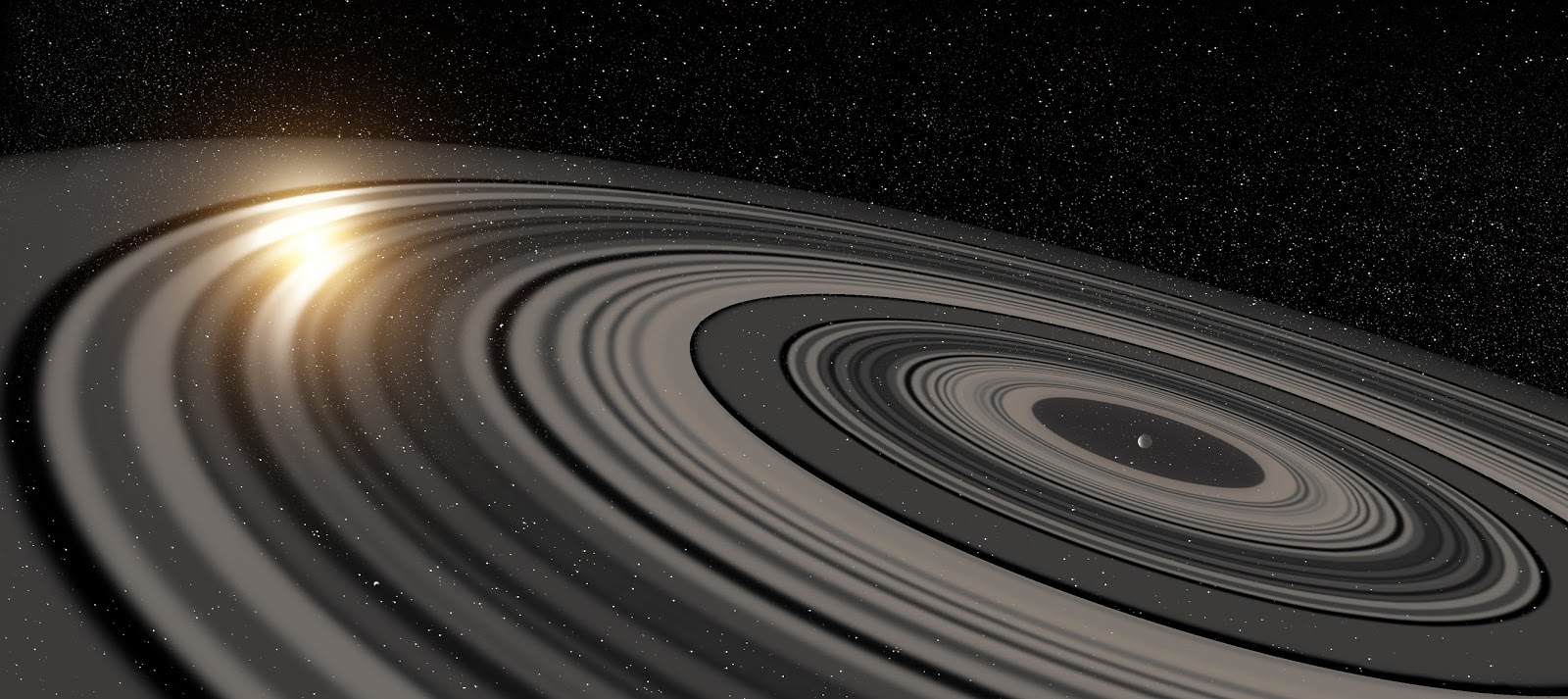 The near-invisible outer rings extend to 300000km.
The near-invisible outer rings extend to 300000km.
Particles composing the rings are generally very small, most a few centimeters in diameter with few ranging up to a few meters in size. The latter mass around a handful of tons each.
Between these rings are moons.
 The most notable are Titan, Iapetus, Rhea, Dione and Tethys. All are larger than 1000km across, with Titan standing as second-largest moon in the Solar System with 5150km diameter.
The most notable are Titan, Iapetus, Rhea, Dione and Tethys. All are larger than 1000km across, with Titan standing as second-largest moon in the Solar System with 5150km diameter.
There are 62 known moons, of which sixteen are between 18 and 500km in diameter. Saturn's smaller moons are interesting targets for colonization to provide support for efforts on larger bodies.
Habitability
If we actually decided to live on Saturn itself, we'd be facing a difficult task... but with fewer hardships than attempting to do the same on Jupiter.
 Artist's impression of the view from Cassini's closest approach.
Artist's impression of the view from Cassini's closest approach.
There is no solid ground, so a colonization attempt will have to stay in the atmosphere. At lower altitudes, temperatures and pressures become crushing, so only the top layer of Saturn's atmosphere is realistically accessible.
Two options are available: -100km altitude or -300km altitude.
At -100km, the atmospheric pressure is equal to Earth's sea level pressure. However, external temperature would be a chilling 134K, equivalent to -139 degrees Celsius. At -300km, temperatures rise to a much more comfortable 20 degrees Celsius, but the pressure is 10 atmospheres. This is the same as the pressure found 90 meters under the sea.
Staying warm through insulation and heating requires much less mass than reinforcing the habitats to withstand high pressures. So, it is very likely that colonization attempts will focus on staying at higher altitudes than at lower altitudes.
The main challenge is staying in the air.
Buoyancy is an option. A balloon containing gasses less dense than the surrounding atmosphere generates a lifting force equal to the difference in density between the internal and external gasses.
 On Earth, a helium balloon is very effective because the internal gasses have a density of 0.178kg/m^3. The external gass, air, has a density of 1.292kg/m^3 at sea level. The difference, 1.114kg/m^3, means that each cubic meter of volume in a helium balloon can lift up to 1.114kg off the ground.
On Earth, a helium balloon is very effective because the internal gasses have a density of 0.178kg/m^3. The external gass, air, has a density of 1.292kg/m^3 at sea level. The difference, 1.114kg/m^3, means that each cubic meter of volume in a helium balloon can lift up to 1.114kg off the ground.
On Saturn, buoyancy is much harder to achieve. At -100km altitude, it is believed that Saturn's atmosphere has a density of 0.19kg/m^3. A helium balloon would barely float in the atmosphere.
Better balloons would need a combination of lower density gas (hydrogen), higher temperatures and higher pressures to lower internal gas densities. A perfect vacuum balloon would have a density close to 0kg/m^3... but even so it would only be able to lift a measly 190 grams per cubic meter, from which must be deduced the mass of the balloon's pressure vessel. With such a low lifting ability, a single ton of equipment on Saturn would require a lifting balloon at a minimum 20 meters in diameter.
In short, trying to stay afloat in Saturn's atmosphere is possible, but would require absolutely massive balloons for even the smallest payloads. Very advanced materials technology would have to be developed for temperature-resistant, shear-resistant and ultra-lightweight balloon envelopes to make this a feasible proposition.
The other option is lifting power from a wing.
A colonization effort of Saturn might fly through the upper atmosphere and maintain altitude through lifting surfaces. Saturn's surface gravity is 1.065g, which is very close to the surface gravity on Earth. What this means is that to keep one ton of equipment in flight, one ton of lifting force must be generated by the wings.
The main difficulty with this approach is the very low density of the atmosphere. A wing in Saturn's atmosphere would generate 14.7% of the lift that it would on Earth. To compensate for this, the wing must be made 6.8 times larger or fly through the air 6.8 times faster. A larger wing masses proportionately more, so attempting to fly at jet airliner speeds would require planes that look more like the Solar Impulse plane than the Airbus A340: long thin wings that make up most of the plane's size.
 Flying instead 6.8 times faster would mean that for an airplane of familiar size and proportion, hypersonic speeds are needed just to take off!
Flying instead 6.8 times faster would mean that for an airplane of familiar size and proportion, hypersonic speeds are needed just to take off!
Thankfully, lift and drag are linked. If lift is hard to generate, then there is not much drag either. Generating enough lift would create similar levels of drag as here on Earth. This would mean that the most efficient way to fly on Saturn would be by using some sort of supersonic flying wing.

NASA's N3-X, powered by electric turbojets.

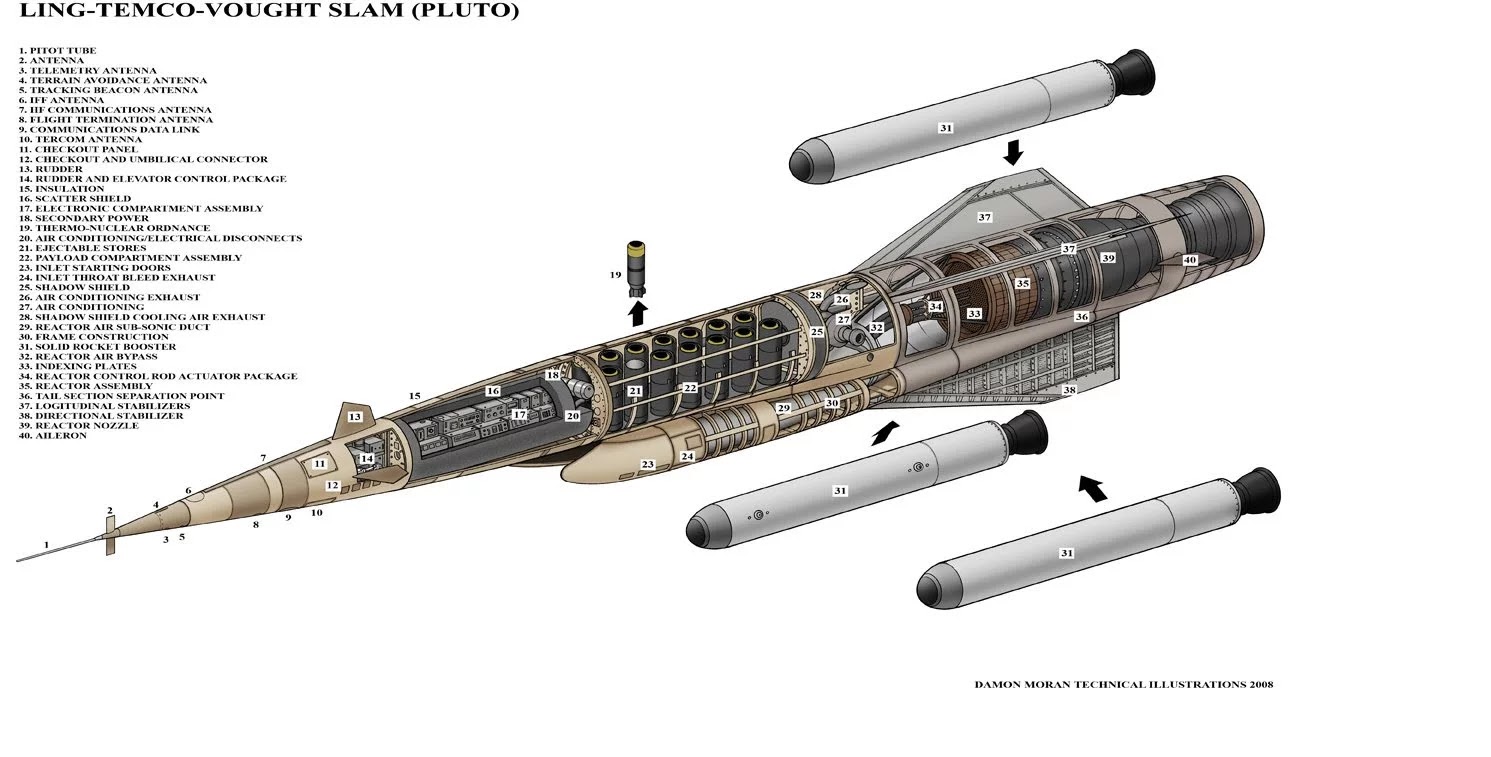 The nuclear-ramjet-powered SLAM.
The nuclear-ramjet-powered SLAM.
The best thruster would work like a ramjet: the incoming hydrogen airflow is compressed without any turbines. It is them heated and accelerated by burning it in on-board liquid oxygen or with the exposed core of a nuclear reactor.
Of course, staying afloat is only half the challenge.
Resources such as energy and materials must be acquired to ensure that a floating colony survives longer than for a short visit.
All that would be needed is scarce in Saturn's atmosphere.

Hydrogen and helium compose 99.5% of the gasses the flying colony would have access to. Traces of methane and ammonia fill the remaining 0.5%, with vital oxygen compounds or water measured in parts per million. It is the gaseous equivalent of a dry desert. If the gasses are collected, liquefied and fractioned to extract the methane and ammonia, less than 3.2 grams of methane and 0.1 grams of ammonia per cubic meter would be obtained!
 Aramid fibres.
Aramid fibres.
Probably the only consolation is that ammonia and methane provide the carbon, nitrogen and hydrogen needed to form aramid fibres. They are a high tensile strength material which provide a robust yet lightweight construction material to make more habitats and pressurized balloons from. Solid containers might use carbon fibres instead.
However, powering even critical systems such as heating and life support, measured in kilowatts per person, is a challenge. Less than 140W/m^2 of sunlight reaches Saturn. At -100km altitude, less than half of that amount is expected to reach a flying colony. Even highly efficient solar cells would need over 35m^2 for a single kilowatt of electric output... a small colony would need several acres of solar panels just to stay alive! This is not a practical design if it drag, mass and structural requirements are considered.
Chemical, aerothermal, wind and nuclear energy are the other options.
Since reactive elements to burn in hydrogen are extremely rare and usually already bound in stable molecules, chemical energy sources are a no-go.
Aerothermal energy exploits the differences in temperature between different altitudes in an atmosphere, like a geothermal power station does with different depths. Saturn's core is expected to radiate away its energy at 12000K, while the troposphere is a frigid 80K. A lot of energy can be extracted from this temperature gradient... if the two layers were not separated by incredible distances and pressure differences.
Due to the gas giant's massive size and low density, it takes altitude differences of hundreds of kilometers to obtain temperature differences of a few dozen kelvin. An aerothermal power station on Saturn would need to circulate a coolant up and down these distances, making it a huge investment. Obtaining the resources to build it would be very hard, making it float and survive the buffeting winds would be even more difficult.
 NASA photo of a Saturn storm.
NASA photo of a Saturn storm.
Wind energy is an excellent option. Storms push winds to over 400m/s at the equator, six times faster than even the strongest hurricanes on Earth. Wind power scales with cubed increases in velocity, so even in the lower density atmosphere of Saturn, megawatts of electricity could be generated by even relatively small wind turbines. Of course, there are challenges and huge investments in time, resources and effort to make the most of this power source: they will be discussed in a dedicated section below.
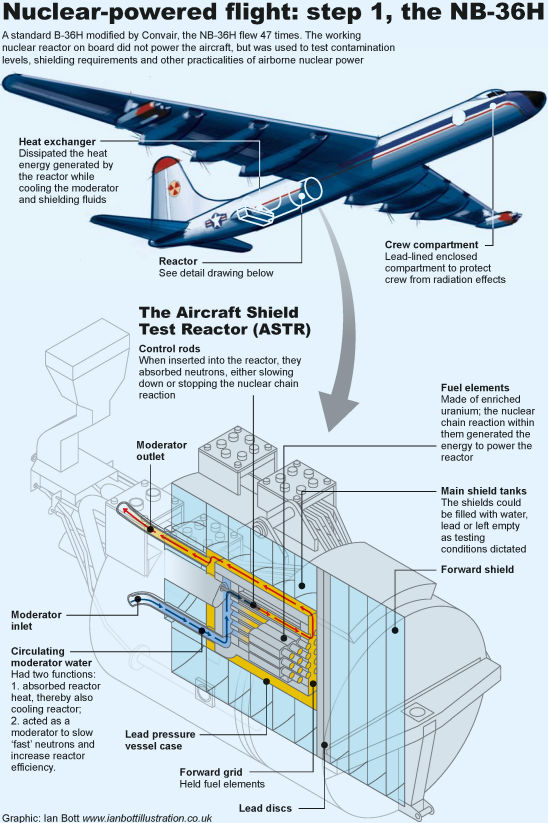
Convair B-36s were used as test-beds for flying nuclear reactors.
Of all the possible sources of energy, nuclear power is the only realistic option for the foreseeable future. Powerful, compact and long-lasting, it would likely arrive pre-built from Earth and keep running for decades. Having access to cold gasses outside the colony would also make waste heat management of a reactor quite easy. The downside is that Saturn, its moons and most of the Solar System is devoid of the fissile fuels needed to keep the reactors running forever.
At a first glance, Saturn should have a clement environment to live in. The atmosphere above a floating colony would provide sufficient protection against cosmic rays and other sources of radiation. 1g gravity and sea-level pressure should mean living conditions are no worse than on Arctic research stations.
In fact, the colony would constantly be buffeted by extreme winds. Looking out of a window would show only a glimmer of light illuminating endless, turbulent clouds stretching from horizon to horizon. There is a constant risk of the habitats being punctured or wings failing due to wear (a flying colony cannot just 'stop' for repairs). In many ways, it is worse than the vacuum of space, a situation worsened by the simple unpredictability of the winds and temperatures from day to day.
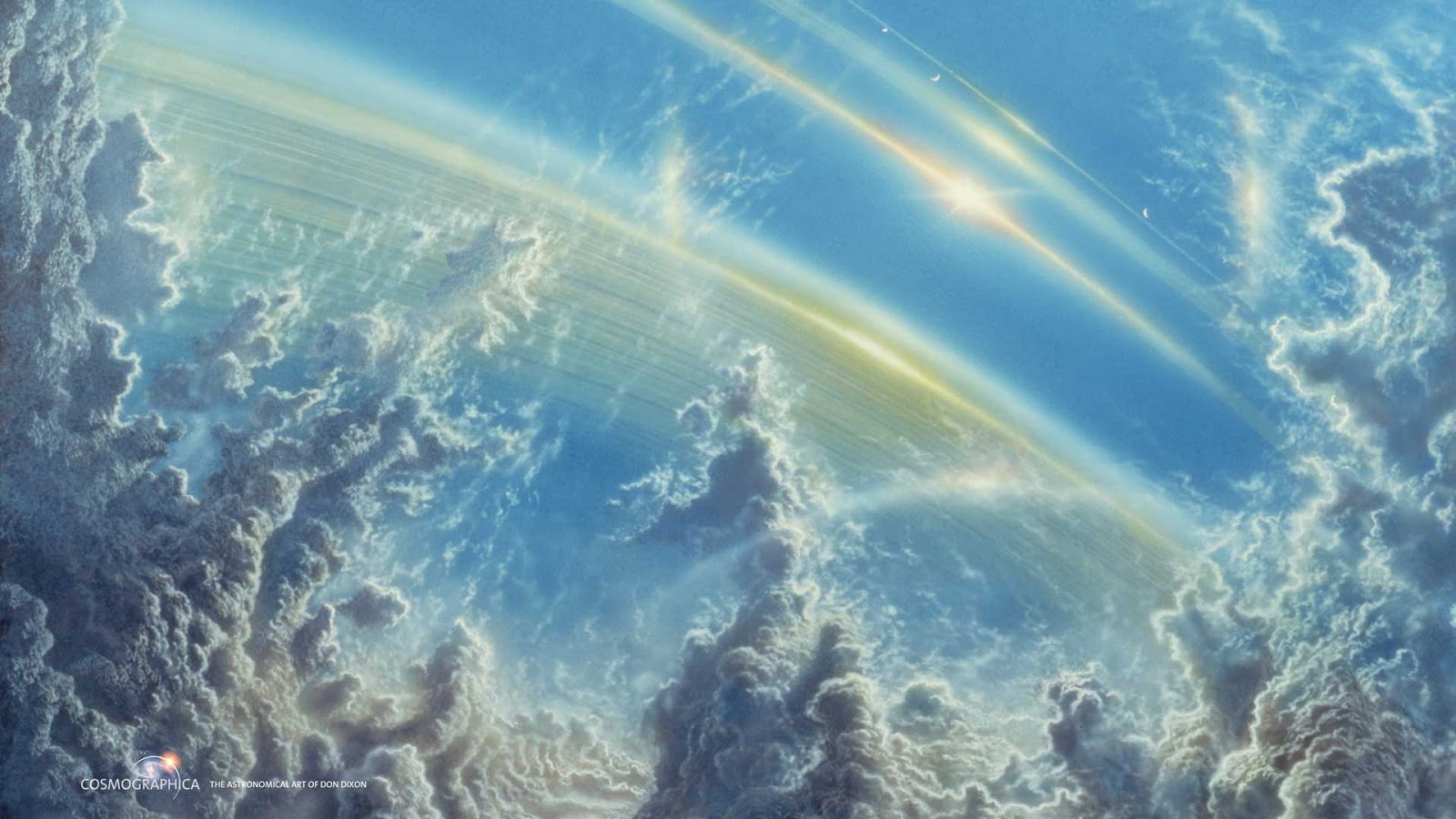 Like this, but much darker.
Like this, but much darker.
If, despite all these hardships, a permanent presence is established, it would likely be utterly dependent on supplies coming in from bases on other moons. Orbital mechanics therefore add another layer to the challenges the colony would face: reaching low orbit around Saturn requires an orbital velocity of 25km/s. Thankfully, Saturn rotates at an incredible 9.87km/s at the equator. Launching in the direction of the planet's rotation reduces the deltaV budget to low orbit down to about 15km/s.
The deltaV required to send down supplies from Saturn's moons down to Saturn's equator, if full use of aerobraking is available, ranges from 5.7km/s from Mimas to 9.5km/s from Titan. This is a significant cost, comparable to sending payloads into orbit from Earth's surface.
Sending anything the other way, from Saturn's upper atmosphere to a moon, such as scientific experiments or sea-sick colonists, would require 21 to 25km/s!
For near future propulsion technology, such as hydrogen-oxygen or nuclear thermal rockets with a performance of 400 to 1000 seconds Isp, Low Saturn Orbit O) is a one-way street. They would require incredibly high mass ratios (12 to 587) to climb back out of low orbit. Because of these deltaV budgets, a station in Low Saturn Orbit is actually harder to supply than a station in the atmosphere where aerobraking can be used.
Titan
The largest moon, the most interesting moon and the best target for a colonization attempt.

It is 50% larger than Earth's moon and nearly twice as massive, weighing in as second-largest moon of the Solar System. Its surface gravity of 0.14g helps it retain a unique feature: a thick and dense atmosphere composed nearly entirely of nitrogen (98.4%).
It has liquid lakes and rivers on the surface, but these are made of methane and ethane. Titan receives 1% of the sunlight that Earth does, and after passing through the thick clouds, less than 0.1% remains to heat up the surface to a frigid 94 K (−179.2 degrees Celsius).
 The 'underground ocean' model is displayed here.
The 'underground ocean' model is displayed here.
Titan's surface is a thick layer of ice run through by lakes of liquid methane and ethane. A thick petrochemical haze floats over these lakes. Between the lakes run rivers that have carved endless valleys, crevasses and channels over the millennia.
 A view of Titan's second-largest lake, Ligeia Mare, composed from images taken by Cassini.
A view of Titan's second-largest lake, Ligeia Mare, composed from images taken by Cassini.
Ammonia is lighter than water in either liquid or solid forms. It is therefore concentrated in the upper layers of Titan's icy crust, permeating the porous ice at the surface and forming water/ammonia/methane clathrates underneath.
 As you go deeper, water becomes the prevalent component, potentially forming a vast sub-surface ocean upon which the icy surface floats. It is thought that the ice layers are on average 200km thick, which an ocean another 300km deep underneath that.
As you go deeper, water becomes the prevalent component, potentially forming a vast sub-surface ocean upon which the icy surface floats. It is thought that the ice layers are on average 200km thick, which an ocean another 300km deep underneath that.
Because the moon underwent a period of relative warmth during its formation, it enjoyed nearly fully liquid crust for over three billion years. As seen below, the outer layer would have allowed heavier elements such as rocks, metals and minerals to sink to the bottom of the ocean. This means that today, after most of the ocean froze over, the surface should contain very little of anything heavier or denser than water ice.
 Evolution of Titan's crust over the past 4.5 billion years.
Evolution of Titan's crust over the past 4.5 billion years.
The residual heat now powers a cryo-volcanic cycle in which methane is expelled into the atmosphere to replenish losses due to photochemical reactions driven by ultraviolet radiations from the Sun. The result of those reactions in a range of petrochemical and organic molecules called tholins.
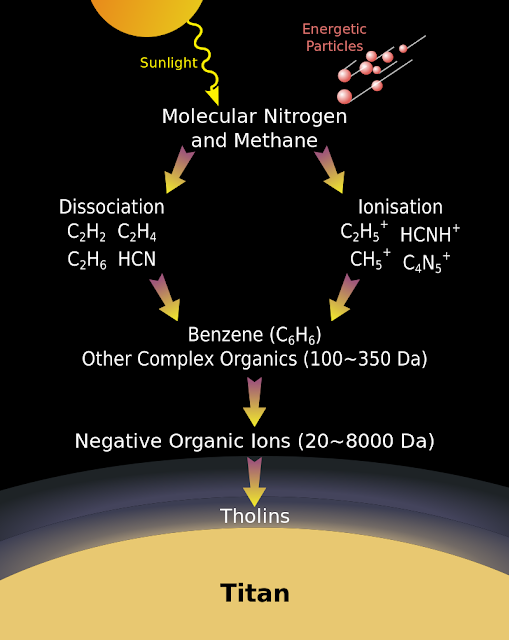 'Da' stands for Daltons, a unit equal to 12 atomic mass units.
'Da' stands for Daltons, a unit equal to 12 atomic mass units.
 The weather cycle on Titan.
The weather cycle on Titan.
Tholins are large molecules (over 12 atoms) composed of hydrogen, carbon and nitrogen. They fall as large, slow raindrops and accumulate at the bottom of methane lakes as a sludge layer that NASA simply calls 'gunk'. Tholins are what gives Titan's atmosphere its reddish haze.
Titan will be difficult to live on.
The main issue is the cryogenic temperatures on the surface. Unlike the airless void where the only way to lose heat is through the slow process of radiation, the thick atmosphere of Titan actively sucks heat away through the much faster process of conduction. From a 293K interior to a 94K exterior, a space-grade 1mm thick aluminium wall would lose more than 40MW/m^2! A human wandering onto the surface would freeze solid in seconds.
Directly dealing with this problem costs energy and mass. Thick insulators will be needed to slow down conduction. 10cm of polyurethane foam can reduce heat losses to less than 4W/m^2. Regular human body heat is sufficient to warm a well insulated environment. A 10m long, 5m wide half-cylindrical habitat would need a constant 314W of heating if it utilized the thick polyurethane insulation described above - humans emit 100W of body heat on average.
The definitive solution for this will be apply the same colonization methods as on the moons of Jupiter: dig under the surface and create underground volumes for habitation. Having to cover every exposed surface with thick insulation is a burden on an early colony's industrial capacity. Ice, on the other hand, is a natural insulator. Humans living inside an ice-walled habitat can actually heat it up quickly enough to melt the ice.
However, Titan's surface ices are not suitable for construction. Solid water ice is heavier than the methane-riddled, porous ammonia/water ice on the surface, so it will sink. You cannot build out of the surface ices either, as they are porous and filled with methane. Exposing it to the heat of a habitat would cause the methane to bubble out and leave channels and empty pockets big enough to cause any structure to collapse.
 With the atmosphere protecting against radiation, you can build directly on the surface.
With the atmosphere protecting against radiation, you can build directly on the surface.
Finding an appropriate is best done at the poles, where there is less methane rainfall, or at the edges of a lake, so that liquid methane can be used to cool the habitats' exteriors and keep the ices from melting or out-gassing. There, you can build directly on the surface with no digging required.
Most of a colony's needs can be met: plentiful water for oxygen and hydrogen, ammonia for fertilizer and organic compounds, methane for plastics. Construction materials would revolve around carbon composites, aramid fibres and polyethylene plastics. No metals or elements heavier than carbon would be accessible - essentials such as sulphur, potassium and phosphorus would have to imported from elsewhere.
The other major problem is energy.
Even if heating demands are greatly reduced, power will be needed to drive life support's recyclers, circulate air, light the plantations, power the mining equipment, heat the chemical reactors and so on. Every expansion or intensification of activities is a proportional increase in demand for energy.
Producing electricity on Titan would be quite difficult. Solar power is too faint to be practically exploited at 14W/m^2 at the surface. Titan's thick icy crust precludes the use of geothermal power, and the wind speed at surface level is so low that wind power would produce 1500 times less power than on Earth.
The low gravity and the generally flat topography makes hydropower an incredibly poor investment of resources. For reasons stated above, there is an extremely low chance of finding fissile ores to power nuclear reactors.
So what options are there for producing energy on Titan?
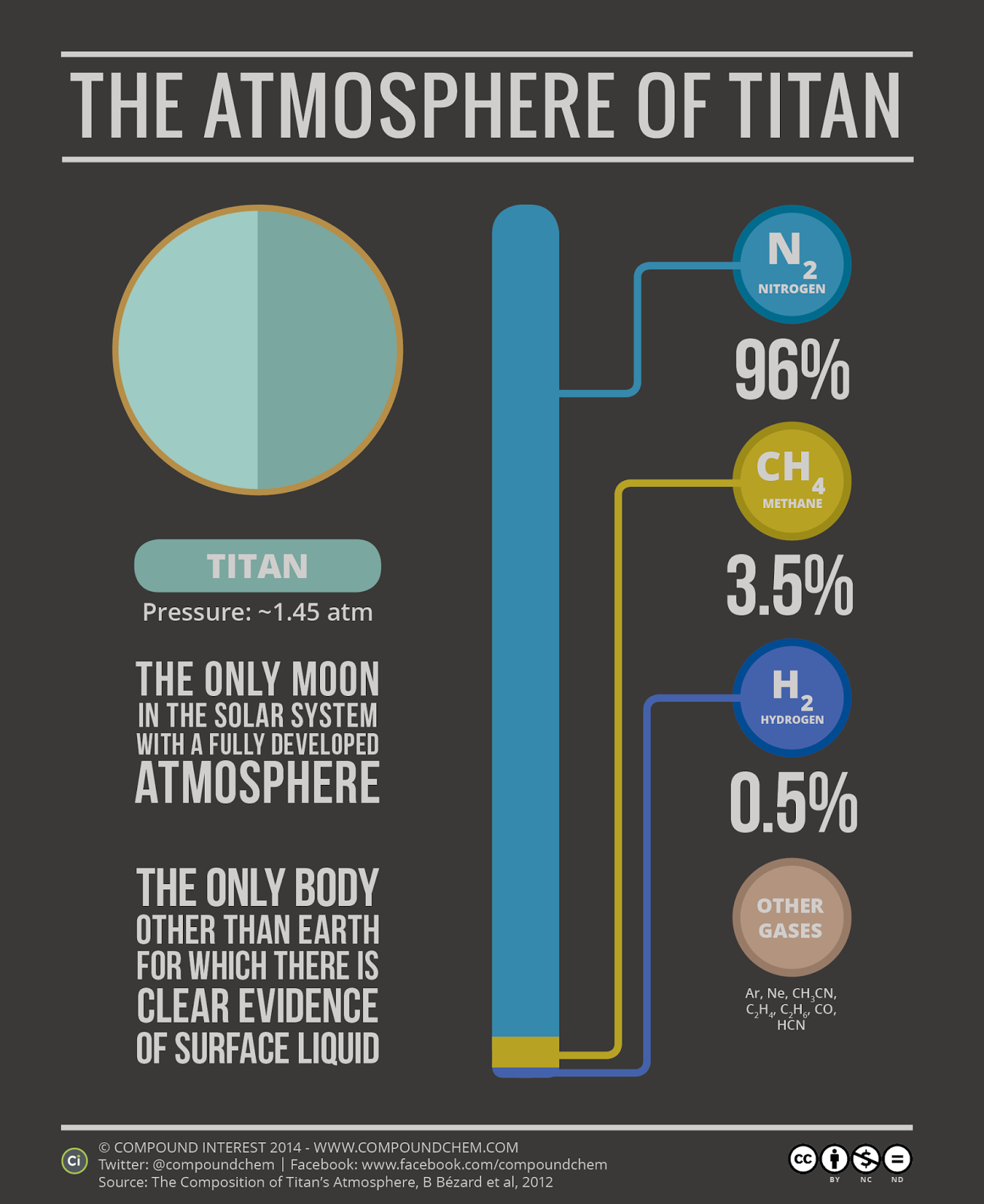 Unlike on Earth, Titan is mostly devoid of reactive chemicals. Nitrogen is very stable and there is no free oxygen to burn the liquid methane in. Extracting oxygen from water costs more energy than burning the products in methane produces. Free hydrogen is present in the upper atmosphere, and it can be forced to react with nitrogen to produce ammonia in an exothermic process called the Haber Process. Hydrogen composes 0.1% of Titan's air and the reaction nets only 30.8kJ per mole of hydrogen.
Unlike on Earth, Titan is mostly devoid of reactive chemicals. Nitrogen is very stable and there is no free oxygen to burn the liquid methane in. Extracting oxygen from water costs more energy than burning the products in methane produces. Free hydrogen is present in the upper atmosphere, and it can be forced to react with nitrogen to produce ammonia in an exothermic process called the Haber Process. Hydrogen composes 0.1% of Titan's air and the reaction nets only 30.8kJ per mole of hydrogen.
Another option is the thermal decomposition of tholins. They are large molecules kept stable only by the extremely low temperatures. Heated slightly, they are likely to decompose into simpler elements such as ammonia, nitrogen and methane while releasing energy. However, it is unknown if they can be collected in significant quantities, but scraping lake-beds would be a good start.
Finally, there is wind energy.
 Due to having a very thick and cold atmosphere, wind speeds are very low on Titan. A gentle 0.5m/s can be felt on the ground, rising to about 2m/s at 3000m altitude. Compare this to Earth, where wind speeds at the same altitude are at 5m/s. At an even higher altitude of 40km, Titan wind speeds reach 20m/s, up to 30m/s at 60km. The strongest winds are present over the largest lakes, like oceanic storms back home.
Due to having a very thick and cold atmosphere, wind speeds are very low on Titan. A gentle 0.5m/s can be felt on the ground, rising to about 2m/s at 3000m altitude. Compare this to Earth, where wind speeds at the same altitude are at 5m/s. At an even higher altitude of 40km, Titan wind speeds reach 20m/s, up to 30m/s at 60km. The strongest winds are present over the largest lakes, like oceanic storms back home.
The formula for calculating wind power is the following:
Wind Power=0.5 × Turbine Efficiency × Area × Density × Wind Speed^3
Wind power is in watts and turbine efficiency is a dimensionless factor. Modern turbines achieve an efficiency of about 40%, with 59.3% being the maximum theoretical limit. Area is the disk covered by the turbine blades, in m^2. Density is that of the atmosphere at the turbine's altitude. On Titan, ground level air density is about 5.77kg/m^2. At altitude of 40km, it is about 0.73kg/m^3; density is proportionate to pressure (0.1 bar at 40km to 1.5 bar at 0km) and inversely proportional to temperature (75K to 94K). Wind speed is in m/s.
If we take the most powerful wind turbine currently produced, the Vestas V-164 with 21000m^2 swept area, and place it at a 40km altitude on Titan, it would produce 24.5MW of power. This is 35% more power than it would have produced in our atmosphere at similar altitudes.
Wind turbines have several advantages on Titan. The lower gravity would reduce structural requirements. The dense atmosphere allows more mass to be floated to higher altitudes - the greater the turbine high, the faster the winds it catches and power it generates. There are many current designs for high altitude turbines, as are presented below, and on Titan they will be smaller and lighter.
Airborne_wind_generator-en.svg.png
Another advantage a Titan wind turbine has is that the atmospheric temperature is so low, certain superconductors can operate without needing any cooling or protection.
 A confusor uses the Coanda effect to increase wind speeds entering the turbine by up to 30-40%, more than doubling output.
A confusor uses the Coanda effect to increase wind speeds entering the turbine by up to 30-40%, more than doubling output.

Wind power is a large-scale solution to energy problems a Titan colony would have. It is also limited in power density: each turbine would need a large clearing for anchoring the balloons. The industrial capacity to produce the large power generating equipment will not be available in the early stages of colonization, and most of the heavy elements that go into producing superconductors and electromagnets will have to sourced from off-planet.
The Saturn Energy Network
Unlike Jupiter, Saturn does not have an overwhelming magnetosphere that can easily be tapped for power.
What it does have however is a relatively clement environment and very strong winds. Novel turbine designs can attempt to harness these winds with a potential output of terawatts. The downside is that much more time and resources must be invested into the Saturn system to obtain the power output needed to drive a full colonization attempt compared to Jupiter.
The key problem with harnessing wind energy on Saturn is that you cannot extract energy from a wind if you are also being dragged along by it at the same velocity. Like a heat engine, you need a gradient to extract energy. On a planet with a solid surface, this is easy: you can anchor yourself to the ground. On Saturn, you must build turbines in a slower wind zone that can extend into a faster wind zone.
 Wind speeds on Saturn collected by various missions. 0km starts at 100 mbar.
Wind speeds on Saturn collected by various missions. 0km starts at 100 mbar.
Three wind speed gradients can be found on Saturn: vertical, horizontal and local.
The vertical gradient is between the upper atmospheric layers and the lower layers. On Earth, winds regularly reach gale forces in the stratosphere, culminating in the Jet Stream's 60-75m/s at 24km altitude. Saturn makes the Beaufort scale seem inadequate with 300m/s at 100km altitude and increasing up to 500m/s down at -150km altitude. We don't know if winds reach even greater velocities in the high-pressure depths.
The horizontal gradient is between different latitudes. Equatorial winds are the fastest while polar winds are the slowest, with peaks and reversals near the poles.
 A wind turbine could extend horizontally and be spun by the wind speed differences. The flatter the curve on the chart above, the greater the wind speed difference between latitudes. For example, at the -40 degree latitude, a wind speed difference of nearly 140m/s can exploited over a 5 degree difference... equivalent to about 95000km.
A wind turbine could extend horizontally and be spun by the wind speed differences. The flatter the curve on the chart above, the greater the wind speed difference between latitudes. For example, at the -40 degree latitude, a wind speed difference of nearly 140m/s can exploited over a 5 degree difference... equivalent to about 95000km.
Local wind gradients are caused by storms and convection cells. Storms are frequent and powerful on the gas giant. They have sharply defined edges where wind speed gradients are extreme, to be exploited by relatively small turbines.

A sound frequency based explanation for why Saturn displays hexagonal storm patterns.Convection cells move large masses of air vertically. Wind speeds are lower, but they are much safer and more predictable than storms.
Wind turbines designed to exploit any of these gradients will be positively massive: tens of kilometers long for the vertical wind gradients, thousands of kilometers long for those attempting to draw on the difference between latitudes. On the upside, gigawatts of 'free' and continuous energy is available per turbine.
We will now explore two of these designs.
Kite-drawn Wind Turbine:

Not to scale.
A kite in a lower altitude, higher velocity wind layer drags a floating wind turbine through higher altitude, lower velocity winds. The difference in wind speed makes the turbine spin and generate electricity.
The longer the tether, the greater the difference in wind speeds. It operates best in the deeper atmospheric layers as the increased density makes keeping the turbine aloft easier. In low density air, it might have to deploy wings to increase lift at the cost of more drag.
A wind turbine floating at -100km altitude at the equator, dipping its kite into the -150km wind layer, might see a wind speed difference of over 150m/s. A well-designed wind funnel at the turbine's entrance can further increase this to 200m/s. This would allow for more than 380kW/m^2 with a 50% efficient design, so a 100m diameter design would produce 2.98GW. If the turbine operates at lower altitudes, it can use a smaller balloon to float and more energy can be extracted from the denser airflow. A smaller balloon allows for less drag, which in turn reduces the size of the kite necessary.
Latitude-line Wind Wheel:
 To scale.
To scale.
A much more massive project would be the latitude-line wind wheel. It exploits the differences in wind speeds between different latitudes on Saturn. Instead of using the wind to spin turbine blades, the entire structure rotates with edges catching winds moving in opposite directions.
The edge ring is equipped with sails to catch the wind. Using sailing techniques developed for water speed records, these sails are individually angled into the wind to travel faster downwind than the actual wind speed. Sail speed can be nearly doubled.
The rotation of the entire structure can be used to drive an airfoil around a hub. Like a helicopter, it would provide lift and preclude the use of voluminous, drag-inducing lifting balloons. At the hub, a vertically spinning generator applies torque against the giant wheel's tilt. The wheel compensates for this using its angular momentum and variable lift. Terawatts of electricity are expected from each wheel.
Find the rest here.
(I'm sorry for the image sizes on this forum).
So far away, yet arguably the most beautiful of celestial bodies. The Sun is a pale star and the Earth practically invisible from where it orbits...

Description
Saturn is the second-largest planet in the Solar System, just a bit wider than nine times Earth and weighing nearly a hundred times more. It is distinguished by its vivid set of rings and large moons.


Saturn's atmosphere is much cooler than Jupiter's. The mass difference between the gas giants begins to show as the gasses are much less compressed. At the altitude where atmospheric pressure is equal to Earth's sea level (1atm), we find a frigid haze (-173 degrees Celsius) that obscures the lower levels.
Going deeper reveals three colourful cloud layers. Ammonia, being the lightest, floats on top. Underneath it is a layer of ammonium hydrosulfide (ammonia + water + sulphur) that extends for another hundred kilometers. Beneath both are water ices, starting at 10 atm pressure. Atmospheric temperatures only become comfortable (>20 degrees Celsius) at 300km below the 1 atm altitude, where pressures approach a hundred times sea level.
As stated above, one of Saturn's most impressive features is its ring system. These are composed of 99% water ice and vary between 1m and 1km thickness.

Particles composing the rings are generally very small, most a few centimeters in diameter with few ranging up to a few meters in size. The latter mass around a handful of tons each.
Between these rings are moons.

There are 62 known moons, of which sixteen are between 18 and 500km in diameter. Saturn's smaller moons are interesting targets for colonization to provide support for efforts on larger bodies.
Habitability
If we actually decided to live on Saturn itself, we'd be facing a difficult task... but with fewer hardships than attempting to do the same on Jupiter.

There is no solid ground, so a colonization attempt will have to stay in the atmosphere. At lower altitudes, temperatures and pressures become crushing, so only the top layer of Saturn's atmosphere is realistically accessible.
Two options are available: -100km altitude or -300km altitude.
At -100km, the atmospheric pressure is equal to Earth's sea level pressure. However, external temperature would be a chilling 134K, equivalent to -139 degrees Celsius. At -300km, temperatures rise to a much more comfortable 20 degrees Celsius, but the pressure is 10 atmospheres. This is the same as the pressure found 90 meters under the sea.
Staying warm through insulation and heating requires much less mass than reinforcing the habitats to withstand high pressures. So, it is very likely that colonization attempts will focus on staying at higher altitudes than at lower altitudes.
The main challenge is staying in the air.
Buoyancy is an option. A balloon containing gasses less dense than the surrounding atmosphere generates a lifting force equal to the difference in density between the internal and external gasses.

On Saturn, buoyancy is much harder to achieve. At -100km altitude, it is believed that Saturn's atmosphere has a density of 0.19kg/m^3. A helium balloon would barely float in the atmosphere.
Better balloons would need a combination of lower density gas (hydrogen), higher temperatures and higher pressures to lower internal gas densities. A perfect vacuum balloon would have a density close to 0kg/m^3... but even so it would only be able to lift a measly 190 grams per cubic meter, from which must be deduced the mass of the balloon's pressure vessel. With such a low lifting ability, a single ton of equipment on Saturn would require a lifting balloon at a minimum 20 meters in diameter.
In short, trying to stay afloat in Saturn's atmosphere is possible, but would require absolutely massive balloons for even the smallest payloads. Very advanced materials technology would have to be developed for temperature-resistant, shear-resistant and ultra-lightweight balloon envelopes to make this a feasible proposition.
The other option is lifting power from a wing.
A colonization effort of Saturn might fly through the upper atmosphere and maintain altitude through lifting surfaces. Saturn's surface gravity is 1.065g, which is very close to the surface gravity on Earth. What this means is that to keep one ton of equipment in flight, one ton of lifting force must be generated by the wings.
The main difficulty with this approach is the very low density of the atmosphere. A wing in Saturn's atmosphere would generate 14.7% of the lift that it would on Earth. To compensate for this, the wing must be made 6.8 times larger or fly through the air 6.8 times faster. A larger wing masses proportionately more, so attempting to fly at jet airliner speeds would require planes that look more like the Solar Impulse plane than the Airbus A340: long thin wings that make up most of the plane's size.

Thankfully, lift and drag are linked. If lift is hard to generate, then there is not much drag either. Generating enough lift would create similar levels of drag as here on Earth. This would mean that the most efficient way to fly on Saturn would be by using some sort of supersonic flying wing.

NASA's N3-X, powered by electric turbojets.
Efficiency in this case would be critical. The most efficient engines are turbojets, but their propellers are subject to the same constraints as wings on Saturn: producing the necessary thrust would require propellers that spin nearly seven times faster than on Earth, which is not realistic due to material constraints and turbulent flow losses. The same applies to turbofans and high bypass turbojets.


The best thruster would work like a ramjet: the incoming hydrogen airflow is compressed without any turbines. It is them heated and accelerated by burning it in on-board liquid oxygen or with the exposed core of a nuclear reactor.
Of course, staying afloat is only half the challenge.
Resources such as energy and materials must be acquired to ensure that a floating colony survives longer than for a short visit.
All that would be needed is scarce in Saturn's atmosphere.

Hydrogen and helium compose 99.5% of the gasses the flying colony would have access to. Traces of methane and ammonia fill the remaining 0.5%, with vital oxygen compounds or water measured in parts per million. It is the gaseous equivalent of a dry desert. If the gasses are collected, liquefied and fractioned to extract the methane and ammonia, less than 3.2 grams of methane and 0.1 grams of ammonia per cubic meter would be obtained!

Probably the only consolation is that ammonia and methane provide the carbon, nitrogen and hydrogen needed to form aramid fibres. They are a high tensile strength material which provide a robust yet lightweight construction material to make more habitats and pressurized balloons from. Solid containers might use carbon fibres instead.
However, powering even critical systems such as heating and life support, measured in kilowatts per person, is a challenge. Less than 140W/m^2 of sunlight reaches Saturn. At -100km altitude, less than half of that amount is expected to reach a flying colony. Even highly efficient solar cells would need over 35m^2 for a single kilowatt of electric output... a small colony would need several acres of solar panels just to stay alive! This is not a practical design if it drag, mass and structural requirements are considered.
Chemical, aerothermal, wind and nuclear energy are the other options.
Since reactive elements to burn in hydrogen are extremely rare and usually already bound in stable molecules, chemical energy sources are a no-go.
Aerothermal energy exploits the differences in temperature between different altitudes in an atmosphere, like a geothermal power station does with different depths. Saturn's core is expected to radiate away its energy at 12000K, while the troposphere is a frigid 80K. A lot of energy can be extracted from this temperature gradient... if the two layers were not separated by incredible distances and pressure differences.
Due to the gas giant's massive size and low density, it takes altitude differences of hundreds of kilometers to obtain temperature differences of a few dozen kelvin. An aerothermal power station on Saturn would need to circulate a coolant up and down these distances, making it a huge investment. Obtaining the resources to build it would be very hard, making it float and survive the buffeting winds would be even more difficult.

Wind energy is an excellent option. Storms push winds to over 400m/s at the equator, six times faster than even the strongest hurricanes on Earth. Wind power scales with cubed increases in velocity, so even in the lower density atmosphere of Saturn, megawatts of electricity could be generated by even relatively small wind turbines. Of course, there are challenges and huge investments in time, resources and effort to make the most of this power source: they will be discussed in a dedicated section below.

Convair B-36s were used as test-beds for flying nuclear reactors.
Of all the possible sources of energy, nuclear power is the only realistic option for the foreseeable future. Powerful, compact and long-lasting, it would likely arrive pre-built from Earth and keep running for decades. Having access to cold gasses outside the colony would also make waste heat management of a reactor quite easy. The downside is that Saturn, its moons and most of the Solar System is devoid of the fissile fuels needed to keep the reactors running forever.
At a first glance, Saturn should have a clement environment to live in. The atmosphere above a floating colony would provide sufficient protection against cosmic rays and other sources of radiation. 1g gravity and sea-level pressure should mean living conditions are no worse than on Arctic research stations.
In fact, the colony would constantly be buffeted by extreme winds. Looking out of a window would show only a glimmer of light illuminating endless, turbulent clouds stretching from horizon to horizon. There is a constant risk of the habitats being punctured or wings failing due to wear (a flying colony cannot just 'stop' for repairs). In many ways, it is worse than the vacuum of space, a situation worsened by the simple unpredictability of the winds and temperatures from day to day.

If, despite all these hardships, a permanent presence is established, it would likely be utterly dependent on supplies coming in from bases on other moons. Orbital mechanics therefore add another layer to the challenges the colony would face: reaching low orbit around Saturn requires an orbital velocity of 25km/s. Thankfully, Saturn rotates at an incredible 9.87km/s at the equator. Launching in the direction of the planet's rotation reduces the deltaV budget to low orbit down to about 15km/s.
The deltaV required to send down supplies from Saturn's moons down to Saturn's equator, if full use of aerobraking is available, ranges from 5.7km/s from Mimas to 9.5km/s from Titan. This is a significant cost, comparable to sending payloads into orbit from Earth's surface.
Sending anything the other way, from Saturn's upper atmosphere to a moon, such as scientific experiments or sea-sick colonists, would require 21 to 25km/s!
For near future propulsion technology, such as hydrogen-oxygen or nuclear thermal rockets with a performance of 400 to 1000 seconds Isp, Low Saturn Orbit O) is a one-way street. They would require incredibly high mass ratios (12 to 587) to climb back out of low orbit. Because of these deltaV budgets, a station in Low Saturn Orbit is actually harder to supply than a station in the atmosphere where aerobraking can be used.
Titan
The largest moon, the most interesting moon and the best target for a colonization attempt.

It is 50% larger than Earth's moon and nearly twice as massive, weighing in as second-largest moon of the Solar System. Its surface gravity of 0.14g helps it retain a unique feature: a thick and dense atmosphere composed nearly entirely of nitrogen (98.4%).
It has liquid lakes and rivers on the surface, but these are made of methane and ethane. Titan receives 1% of the sunlight that Earth does, and after passing through the thick clouds, less than 0.1% remains to heat up the surface to a frigid 94 K (−179.2 degrees Celsius).

Titan's surface is a thick layer of ice run through by lakes of liquid methane and ethane. A thick petrochemical haze floats over these lakes. Between the lakes run rivers that have carved endless valleys, crevasses and channels over the millennia.

Ammonia is lighter than water in either liquid or solid forms. It is therefore concentrated in the upper layers of Titan's icy crust, permeating the porous ice at the surface and forming water/ammonia/methane clathrates underneath.

Because the moon underwent a period of relative warmth during its formation, it enjoyed nearly fully liquid crust for over three billion years. As seen below, the outer layer would have allowed heavier elements such as rocks, metals and minerals to sink to the bottom of the ocean. This means that today, after most of the ocean froze over, the surface should contain very little of anything heavier or denser than water ice.

The residual heat now powers a cryo-volcanic cycle in which methane is expelled into the atmosphere to replenish losses due to photochemical reactions driven by ultraviolet radiations from the Sun. The result of those reactions in a range of petrochemical and organic molecules called tholins.


Tholins are large molecules (over 12 atoms) composed of hydrogen, carbon and nitrogen. They fall as large, slow raindrops and accumulate at the bottom of methane lakes as a sludge layer that NASA simply calls 'gunk'. Tholins are what gives Titan's atmosphere its reddish haze.
Titan will be difficult to live on.
The main issue is the cryogenic temperatures on the surface. Unlike the airless void where the only way to lose heat is through the slow process of radiation, the thick atmosphere of Titan actively sucks heat away through the much faster process of conduction. From a 293K interior to a 94K exterior, a space-grade 1mm thick aluminium wall would lose more than 40MW/m^2! A human wandering onto the surface would freeze solid in seconds.
Directly dealing with this problem costs energy and mass. Thick insulators will be needed to slow down conduction. 10cm of polyurethane foam can reduce heat losses to less than 4W/m^2. Regular human body heat is sufficient to warm a well insulated environment. A 10m long, 5m wide half-cylindrical habitat would need a constant 314W of heating if it utilized the thick polyurethane insulation described above - humans emit 100W of body heat on average.
The definitive solution for this will be apply the same colonization methods as on the moons of Jupiter: dig under the surface and create underground volumes for habitation. Having to cover every exposed surface with thick insulation is a burden on an early colony's industrial capacity. Ice, on the other hand, is a natural insulator. Humans living inside an ice-walled habitat can actually heat it up quickly enough to melt the ice.
However, Titan's surface ices are not suitable for construction. Solid water ice is heavier than the methane-riddled, porous ammonia/water ice on the surface, so it will sink. You cannot build out of the surface ices either, as they are porous and filled with methane. Exposing it to the heat of a habitat would cause the methane to bubble out and leave channels and empty pockets big enough to cause any structure to collapse.

Finding an appropriate is best done at the poles, where there is less methane rainfall, or at the edges of a lake, so that liquid methane can be used to cool the habitats' exteriors and keep the ices from melting or out-gassing. There, you can build directly on the surface with no digging required.
Most of a colony's needs can be met: plentiful water for oxygen and hydrogen, ammonia for fertilizer and organic compounds, methane for plastics. Construction materials would revolve around carbon composites, aramid fibres and polyethylene plastics. No metals or elements heavier than carbon would be accessible - essentials such as sulphur, potassium and phosphorus would have to imported from elsewhere.
The other major problem is energy.
Even if heating demands are greatly reduced, power will be needed to drive life support's recyclers, circulate air, light the plantations, power the mining equipment, heat the chemical reactors and so on. Every expansion or intensification of activities is a proportional increase in demand for energy.
Producing electricity on Titan would be quite difficult. Solar power is too faint to be practically exploited at 14W/m^2 at the surface. Titan's thick icy crust precludes the use of geothermal power, and the wind speed at surface level is so low that wind power would produce 1500 times less power than on Earth.
The low gravity and the generally flat topography makes hydropower an incredibly poor investment of resources. For reasons stated above, there is an extremely low chance of finding fissile ores to power nuclear reactors.
So what options are there for producing energy on Titan?

Another option is the thermal decomposition of tholins. They are large molecules kept stable only by the extremely low temperatures. Heated slightly, they are likely to decompose into simpler elements such as ammonia, nitrogen and methane while releasing energy. However, it is unknown if they can be collected in significant quantities, but scraping lake-beds would be a good start.
Finally, there is wind energy.

The formula for calculating wind power is the following:
Wind Power=0.5 × Turbine Efficiency × Area × Density × Wind Speed^3
Wind power is in watts and turbine efficiency is a dimensionless factor. Modern turbines achieve an efficiency of about 40%, with 59.3% being the maximum theoretical limit. Area is the disk covered by the turbine blades, in m^2. Density is that of the atmosphere at the turbine's altitude. On Titan, ground level air density is about 5.77kg/m^2. At altitude of 40km, it is about 0.73kg/m^3; density is proportionate to pressure (0.1 bar at 40km to 1.5 bar at 0km) and inversely proportional to temperature (75K to 94K). Wind speed is in m/s.
If we take the most powerful wind turbine currently produced, the Vestas V-164 with 21000m^2 swept area, and place it at a 40km altitude on Titan, it would produce 24.5MW of power. This is 35% more power than it would have produced in our atmosphere at similar altitudes.
Wind turbines have several advantages on Titan. The lower gravity would reduce structural requirements. The dense atmosphere allows more mass to be floated to higher altitudes - the greater the turbine high, the faster the winds it catches and power it generates. There are many current designs for high altitude turbines, as are presented below, and on Titan they will be smaller and lighter.
Airborne_wind_generator-en.svg.png
Another advantage a Titan wind turbine has is that the atmospheric temperature is so low, certain superconductors can operate without needing any cooling or protection.


Wind power is a large-scale solution to energy problems a Titan colony would have. It is also limited in power density: each turbine would need a large clearing for anchoring the balloons. The industrial capacity to produce the large power generating equipment will not be available in the early stages of colonization, and most of the heavy elements that go into producing superconductors and electromagnets will have to sourced from off-planet.
The Saturn Energy Network
Unlike Jupiter, Saturn does not have an overwhelming magnetosphere that can easily be tapped for power.
What it does have however is a relatively clement environment and very strong winds. Novel turbine designs can attempt to harness these winds with a potential output of terawatts. The downside is that much more time and resources must be invested into the Saturn system to obtain the power output needed to drive a full colonization attempt compared to Jupiter.
The key problem with harnessing wind energy on Saturn is that you cannot extract energy from a wind if you are also being dragged along by it at the same velocity. Like a heat engine, you need a gradient to extract energy. On a planet with a solid surface, this is easy: you can anchor yourself to the ground. On Saturn, you must build turbines in a slower wind zone that can extend into a faster wind zone.

Three wind speed gradients can be found on Saturn: vertical, horizontal and local.
The vertical gradient is between the upper atmospheric layers and the lower layers. On Earth, winds regularly reach gale forces in the stratosphere, culminating in the Jet Stream's 60-75m/s at 24km altitude. Saturn makes the Beaufort scale seem inadequate with 300m/s at 100km altitude and increasing up to 500m/s down at -150km altitude. We don't know if winds reach even greater velocities in the high-pressure depths.
The horizontal gradient is between different latitudes. Equatorial winds are the fastest while polar winds are the slowest, with peaks and reversals near the poles.
Local wind gradients are caused by storms and convection cells. Storms are frequent and powerful on the gas giant. They have sharply defined edges where wind speed gradients are extreme, to be exploited by relatively small turbines.

A sound frequency based explanation for why Saturn displays hexagonal storm patterns.
Wind turbines designed to exploit any of these gradients will be positively massive: tens of kilometers long for the vertical wind gradients, thousands of kilometers long for those attempting to draw on the difference between latitudes. On the upside, gigawatts of 'free' and continuous energy is available per turbine.
We will now explore two of these designs.
Kite-drawn Wind Turbine:

Not to scale.
A kite in a lower altitude, higher velocity wind layer drags a floating wind turbine through higher altitude, lower velocity winds. The difference in wind speed makes the turbine spin and generate electricity.
The longer the tether, the greater the difference in wind speeds. It operates best in the deeper atmospheric layers as the increased density makes keeping the turbine aloft easier. In low density air, it might have to deploy wings to increase lift at the cost of more drag.
A wind turbine floating at -100km altitude at the equator, dipping its kite into the -150km wind layer, might see a wind speed difference of over 150m/s. A well-designed wind funnel at the turbine's entrance can further increase this to 200m/s. This would allow for more than 380kW/m^2 with a 50% efficient design, so a 100m diameter design would produce 2.98GW. If the turbine operates at lower altitudes, it can use a smaller balloon to float and more energy can be extracted from the denser airflow. A smaller balloon allows for less drag, which in turn reduces the size of the kite necessary.
Latitude-line Wind Wheel:

A much more massive project would be the latitude-line wind wheel. It exploits the differences in wind speeds between different latitudes on Saturn. Instead of using the wind to spin turbine blades, the entire structure rotates with edges catching winds moving in opposite directions.
The edge ring is equipped with sails to catch the wind. Using sailing techniques developed for water speed records, these sails are individually angled into the wind to travel faster downwind than the actual wind speed. Sail speed can be nearly doubled.
The rotation of the entire structure can be used to drive an airfoil around a hub. Like a helicopter, it would provide lift and preclude the use of voluminous, drag-inducing lifting balloons. At the hub, a vertically spinning generator applies torque against the giant wheel's tilt. The wheel compensates for this using its angular momentum and variable lift. Terawatts of electricity are expected from each wheel.
Find the rest here.



